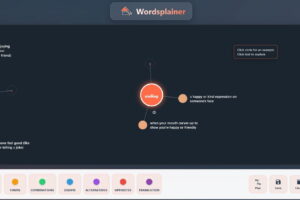
International Student Enrollment Could Drop 15% by Fall
International student enrollment is projected to decline this fall, based on projections from NAFSA using publicly available federal data.
Photo illustration by Justin Morrison/Inside Higher Ed | Getty Images
New international enrollments in the U.S. could drop by as many as 150,000 students in the next year, according to scenario modeling by NAFSA, the association of international educators, and JB International.
Based on a 30 to 40 percent decline in new students, the research projects that colleges and universities could see a 15 percent drop in overall international student enrollments in the next academic year, resulting in $7 billion in lost revenue and 60,000 fewer jobs.
“This analysis … should serve as a clarion call to the State Department that it must act to ensure international students and scholars are able to arrive on U.S. campuses this fall,” said Fanta Aw, executive director and CEO of NAFSA, in a press release. “For the United States to succeed in the global economy, we must keep our doors open to students from around the world.”
The modeling is based on data from the Department of Homeland Security’s SEVIS By the Numbers and State Department’s Bureau of Educational and Cultural Affairs Annual J-1 Exchange Visitor Report, as well as State’s Monthly Nonimmigrant Visa Issuance Statistics, available through May 2025.
NAFSA attributes the projected decline to recent changes to international student visa processing under the Trump administration.
The State Department paused student visa interviews between May 27 and June 18, during peak issuance season, and then implemented vetting protocols for students’ social media accounts, which may have impeded some students’ ability to receive a visa.
NAFSA member institutions have also reported there are limited or no appointments available for their international students in China, India, Japan and Nigeria, which are among the top countries of origin for international students studying in the U.S.
On June 4, President Trump signed an executive order restricting visitors from 19 countries, but visa issuances for students from those countries had already begun to drop. F-1 visa issuances declined 150 percent and J-1 issuances declined 105 percent in May compared to last year, according to an Inside Higher Ed analysis of State Department data.
Over all, F-1 and J-1 visa issuance dropped 12 percent from January to April 2025 and an additional 22 percent year over year in May. NASFA’s report estimates that June 2025 F-1 visa issuances will decline as much as 90 percent under the new policies.
NAFSA is urging Congress to direct the State Department to provide expedited visa appointments for F-1, M-1 and J-1 visa applicants as well as exempt international students from travel restrictions.
The projection does not reflect increasing anxieties among international students interested in studying in the U.S.; a May survey by Study Portals reported student interest in studying in the U.S. has dropped to its lowest point since COVID-19, with students considering other English-speaking nations like the U.K. or Australia instead.
Current visa projections only account for fall 2025 enrollment. In a July interview with Inside Higher Ed, Rachel Banks, senior director of public policy and legislative strategy at NAFSA, noted some colleges and universities are anticipating international students will be unable to make the start of classes in the fall but may be able to come to campus later in the term or in the winter.

Source link


